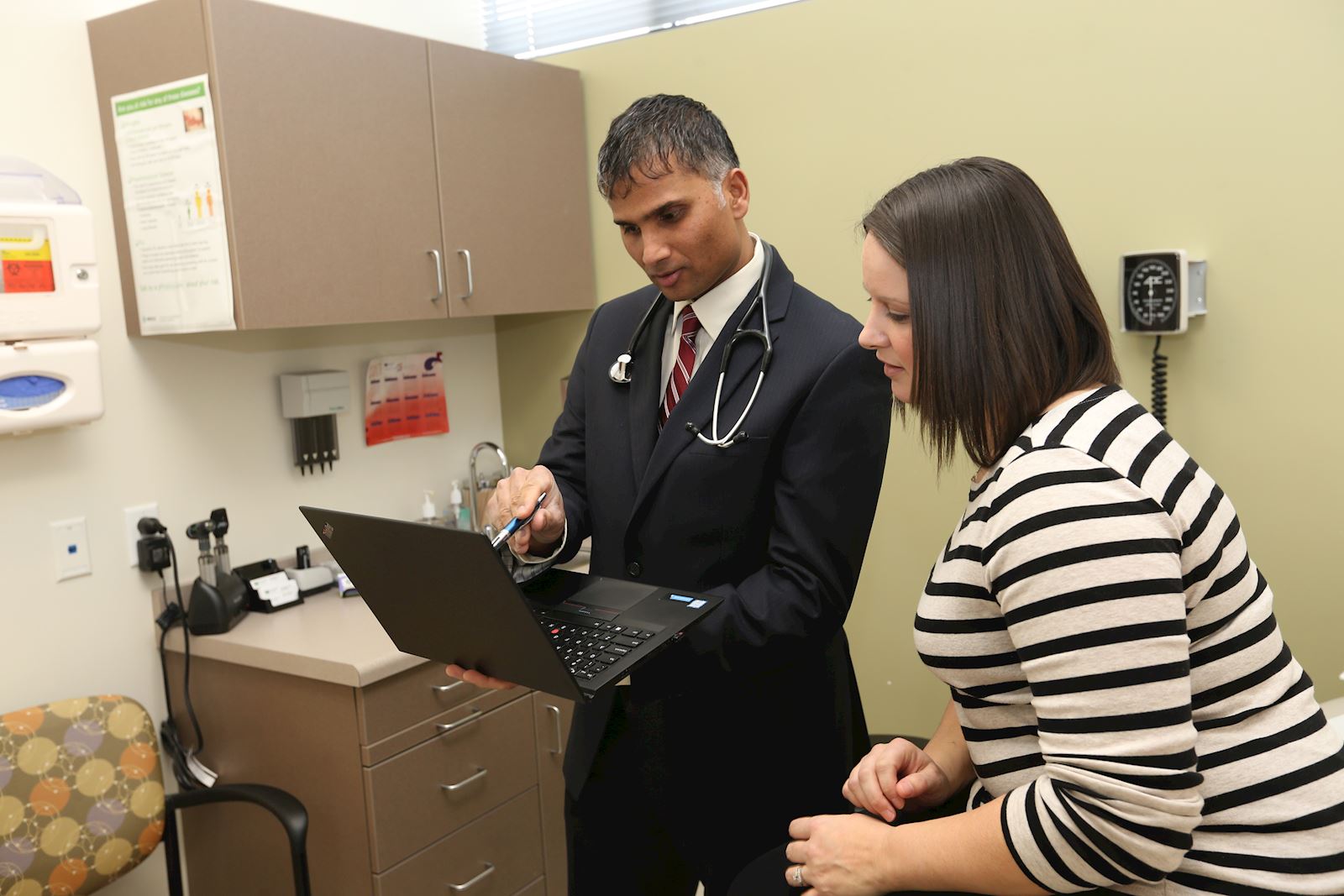It's one of the most dangerous types of cancer. Yet there's no easily recognizable warning signs or routine screening available to catch it early.
Posted
on Wednesday, May 19, 2021

Pancreatic cancer is rarer than other types of cancer. It just barely cracks the top ten list of the most common cancers in the United States. In Iowa, it doesn’t even rank that high, showing up 11th in the American Cancer Society’s 2019 estimates.
Despite the fact that pancreatic cancer only affects three percent of the population, it accounts for seven percent of all cancer deaths. And unlike many of the more common cancers, like breast cancer or prostate cancer, there’s no universal screening to help bring those numbers down.
Instead, you’re left to recognize the warning signs. There’s just one problem: that’s pretty hard to do.
Most pancreatic cancer symptoms first appear to be something else.
The pancreas is a gland that sits in the abdomen, deep inside your body. That deep, internal location makes it really hard to recognize a pancreatic tumor. You can’t feel a lump yourself and standard medical imaging tests can’t even catch it.
To add to the mystery, your pancreas is resilient. It can keep working despite the fact that cancer is growing on it. You may not notice any decrease in function, and the symptoms that do show up can often be sudden or more easily explained by other conditions. In most cases, the signs don’t even show up until the cancer is in an advanced stage.

Catch it Early
Early diagnosis of pancreatic cancer is a critical step for treatment.
Schedule an Appointment
Back or Ab Pain
The pancreas sits deep enough in your body that both abdomen and back pain are possible. It just depends on the location and size of the tumor. The cancerous pancreas presses up against other nerves and organs or blocks your digestive tract. Since back pain is one of the most common conditions, you end up looking at more obvious causes and solutions to your back problems.
Weight Loss
Many kinds of cancer affect your weight. They affect your body’s ability to use calories and protein. As a result, you may lose weight without even trying because you’re burning more calories than before. You may also lose your appetite or experience nausea that makes the thought of eating unappealing — both of which make you lose more weight.
Digestive Issues
Nausea and loss of appetite aren’t the only digestive problems you have. A pancreatic tumor can press the organ up against the stomach, causing indigestion, vomiting or blockage of the pancreatic duct.
You can also get diarrhea, constipation or both. Diarrhea, in particular, is a problem because you don’t absorb nutrients as they pass through the intestines. It’s another, seemingly unrelated symptom that can lead to weight loss.
Jaundice
Jaundice is more often seen in newborns and premature babies. It’s caused by an excess of bilirubin. Your pancreas is located near a bile duct that transports bilirubin from your liver.
A tumor can grow and constrict your bile duct, causing bilirubin to build up in your system. In addition to the distinct yellowing of the skin and eyes, jaundice can change the way your urine and stools look. Your pee gets darker and your stools are lighter.
The pancreas controls your insulin levels and helps regulate blood glucose. When cancer growth affects its function, you develop diabetes, which may appear to be a completely separate problem. But if you’re over 50 and are otherwise healthy, it’s rare to suddenly develop diabetes.
Other factors increase your risk of pancreatic cancer.
When diabetes isn’t a symptom of pancreatic cancer, it’s a risk factor. People with type 2 diabetes and obesity are more likely to develop a pancreatic tumor.
Tobacco use is an even bigger risk factor. Smokers are twice as likely to get pancreatic cancer as those who’ve never puffed on a cigarette. Even smokeless tobacco is associated with an increased chance of getting the disease.
A healthy lifestyle controls for these common risk factors and helps prevent pancreatic cancer. But in 10 percent of cases, it’s genetic. BRCA, a gene linked to an increased risk of breast cancer, is also associated with a higher risk of pancreatic cancer. Gene mutations like this can lead to chronic inflammation of the pancreas, resulting in cancer later in life.
Diagnosis and treatment often come too late.
Unexplained and late-developing symptoms. Hard-to-reach location inside the body. Similarities to other chronic conditions. Lack of advanced screening. All these things add up to create a bleak outlook.
The survival rate for pancreatic cancer is one of the lowest of all types of cancer. Only nine percent of people diagnosed with the disease survive for five years. Part of this is due to the age of diagnosis — most people who develop pancreatic cancer are in their 70s.
It’s also quite difficult to treat. Chemotherapy, radiation therapy and pancreatic surgery are used to extend your life and relieve your symptoms, but they rarely cure the cancer. Often, when pancreatic cancer is caught, it’s already at stage four. So it’s already spread to other organs, taking surgery off the table.
If you can catch it early, you increase your chances of overcoming pancreatic cancer threefold. So if you know you have an increased risk based on your family medical history or you’ve noticed the signs of pancreatic cancer, schedule an appointment with your primary care provider to share your concerns.